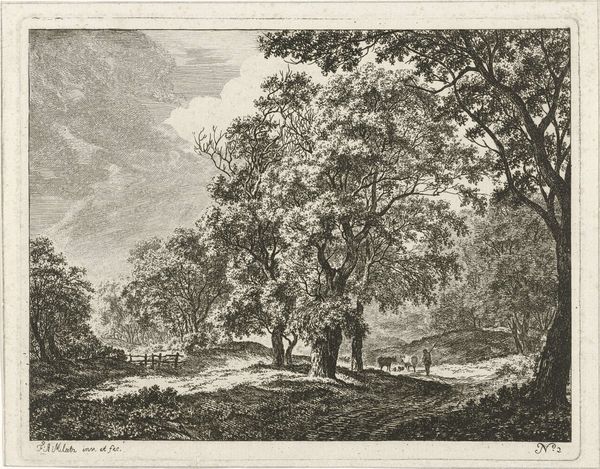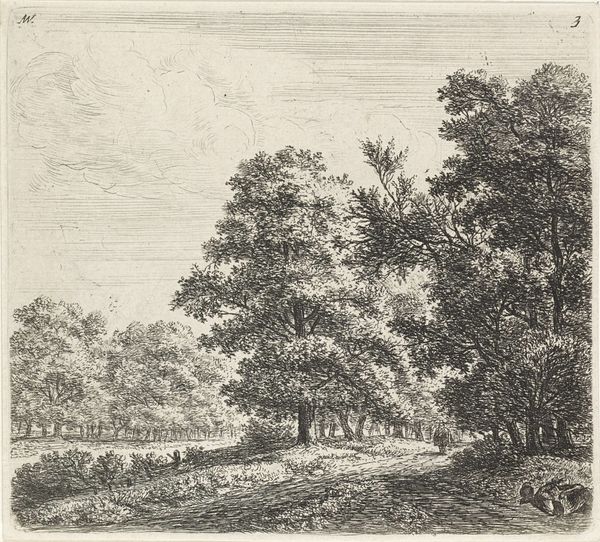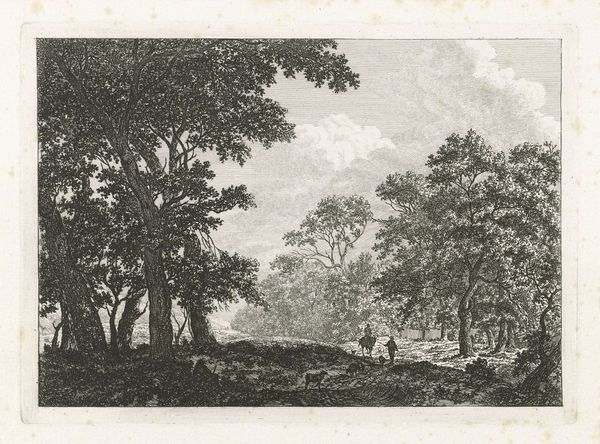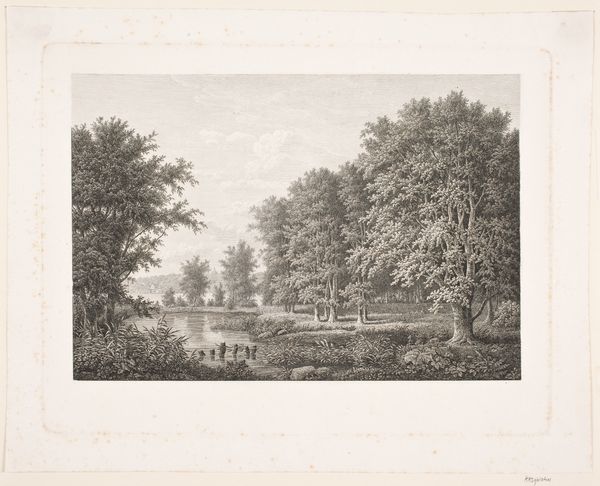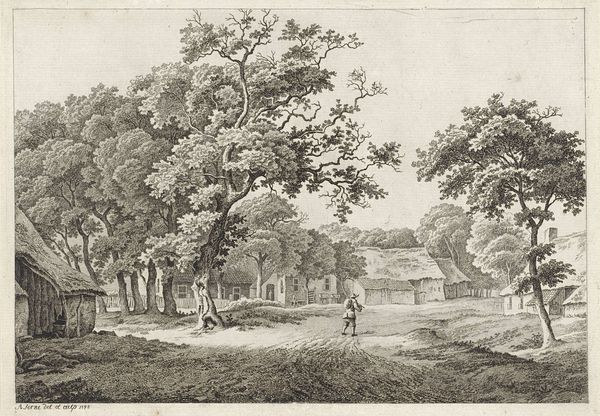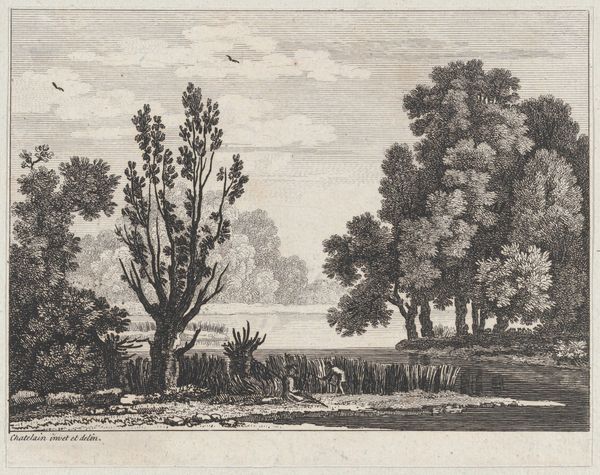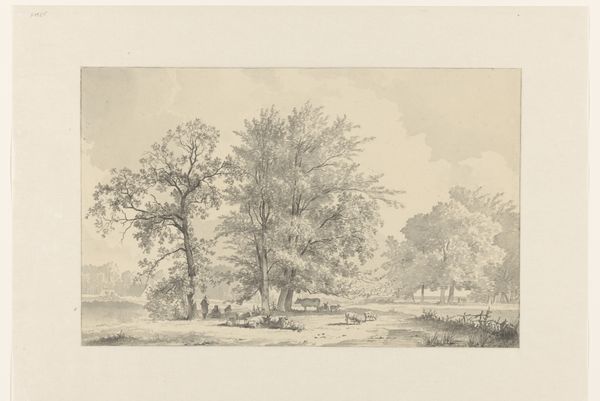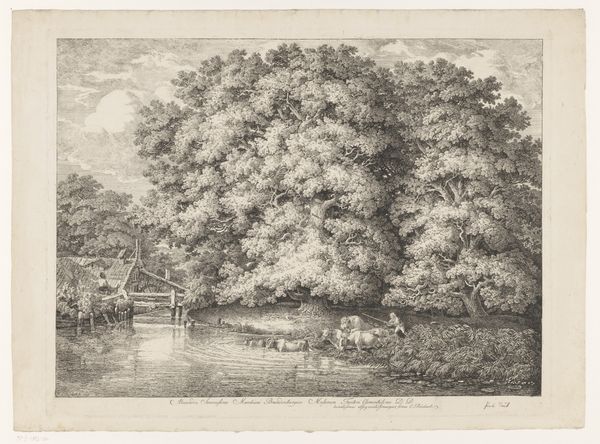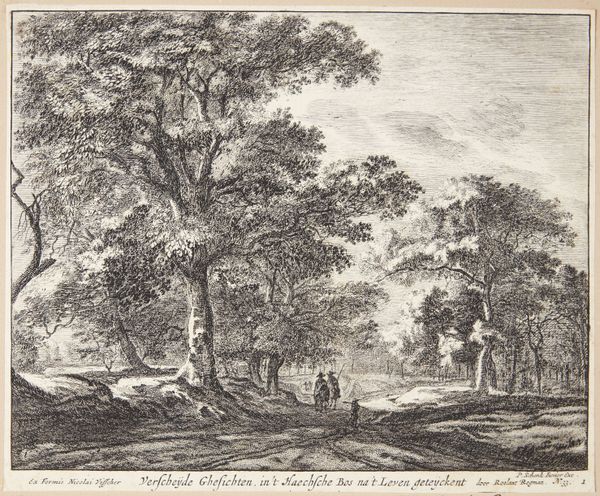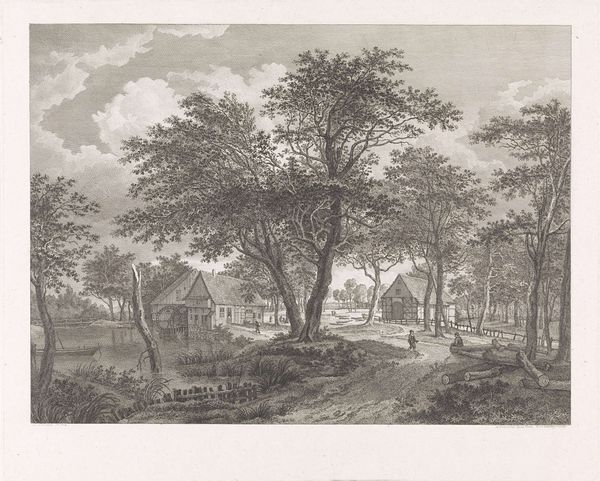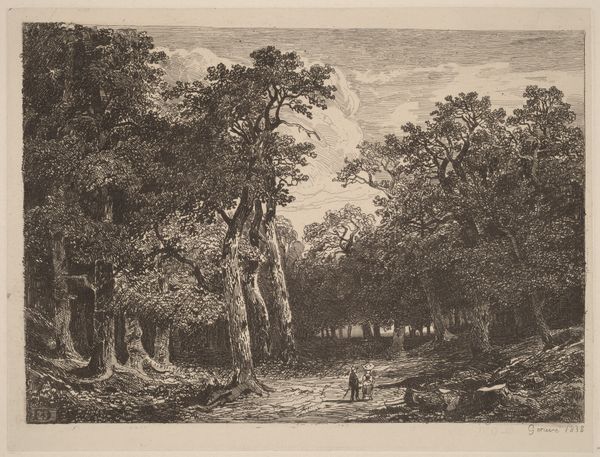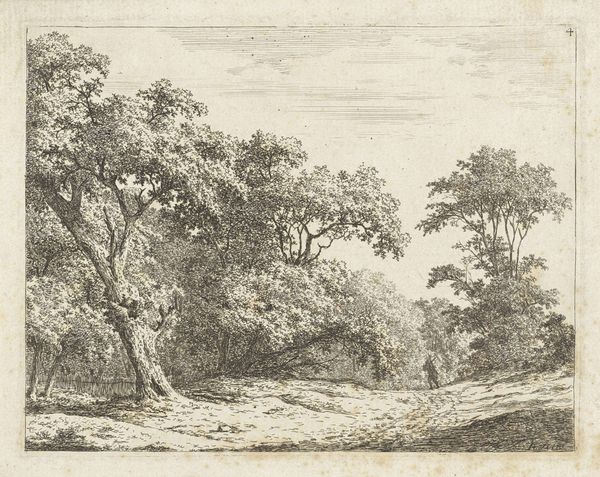
print, engraving
# print
#
landscape
#
romanticism
#
engraving
Dimensions: plate: 6.19 × 8.26 cm (2 7/16 × 3 1/4 in.) sheet: 16.35 × 19.05 cm (6 7/16 × 7 1/2 in.)
Copyright: National Gallery of Art: CC0 1.0
Editor: So, this is Philipp Veith’s "Grove of Trees by the Fish House, near Dresden," an engraving from around 1824. It’s got this wonderfully intricate texture, and yet the scene feels so…tranquil. What strikes you most about this print? Curator: The tranquility you observe, I believe, masks a deeper tension inherent in Romantic landscape. Note how the pastoral scene is meticulously rendered, yet the overall composition places nature as an idealized space, almost divorced from the social realities of 19th-century Dresden. Consider, for instance, the absence of industry, the subtle romanticization of rural life. Who is this landscape *for*, and who is excluded from its supposed serenity? Editor: That’s interesting, I hadn’t thought about it in terms of exclusion. Are you saying it’s not just a peaceful scene, but maybe an idealized, even political statement? Curator: Exactly! Romanticism often glossed over the social and economic disparities of the time, presenting a nature that served the interests and desires of the emerging bourgeoisie. Whose labor, whose exploitation, enables this 'tranquility'? Where are the signs of a changing society, its class conflicts made plain to see? By eliding these questions, Veith, perhaps unconsciously, participates in a visual discourse that privileges certain narratives over others. What do you notice about the people present in this depiction? Editor: Well, they seem very small, almost insignificant in comparison to the grandeur of the trees. Maybe they are just enjoying the park like a nice Sunday stroll... I get it! Their small size also underscores the insignificance, and absence of other members of society! Curator: Precisely! Considering the period's rapid urbanization and social unrest, this carefully crafted idyll presents a deliberate counter-narrative. How does understanding this tension influence your perception of the work? Editor: I see it differently now. It’s beautiful, yes, but it also makes me wonder about the stories it leaves out, the voices it silences. Thank you! Curator: A crucial awareness. Recognizing these omissions is the first step towards a more critical and inclusive art historical understanding.
Comments
No comments
Be the first to comment and join the conversation on the ultimate creative platform.
